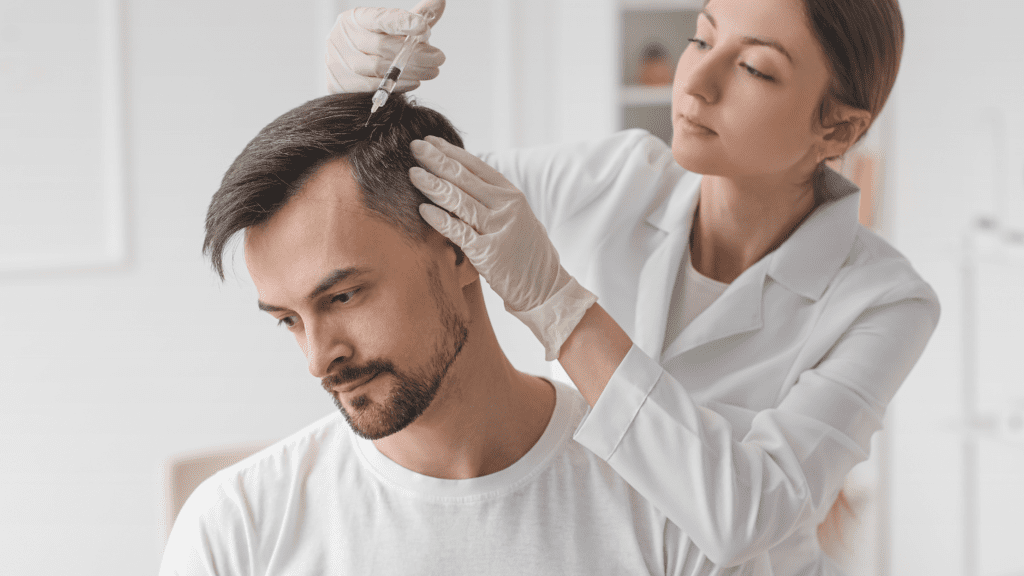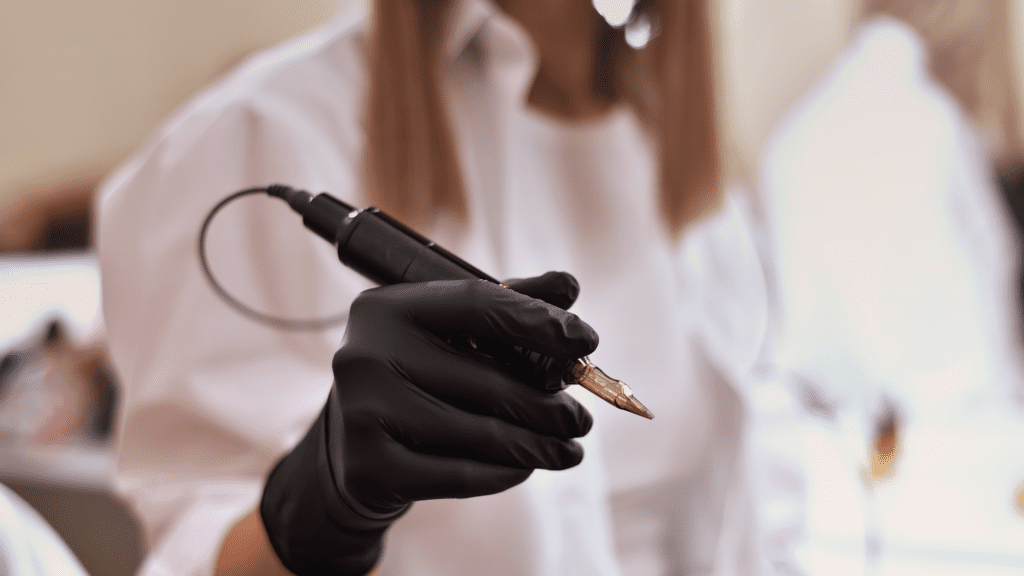Hair loss is a growing concern for millions of people worldwide. Whether caused by genetics, hormonal imbalances, or aging, hair thinning can significantly impact confidence. But what if there was a cutting-edge solution that combined medical innovation with precision technology? Enter tattooing medicine for hair loss, a breakthrough approach using Platelet-Rich Plasma (PRP) and Dutasteride scalp injections.
This article explores how PRP and Dutasteride work, why scalp microinjections (often compared to tattooing) improve treatment efficacy, and how these solutions can restore hair growth. If you’re searching for advanced, non-surgical hair restoration techniques, keep reading.
Understanding Tattooing Medicine for Hair Loss
What Is Tattooing Medicine?
Tattooing medicine refers to the precise microinjection of therapeutic substances into the skin, similar to the technique used in tattooing. However, instead of pigment, doctors use medically proven compounds like PRP and Dutasteride to stimulate hair follicles and prevent hair loss.
How Does It Work for Hair Loss?
– Microinjections deliver PRP and Dutasteride directly into the scalp, ensuring optimal absorption.
– Unlike oral medications, localized treatments minimize side effects and target affected areas more efficiently.
– This technique enhances scalp health by improving blood circulation and DHT suppression, two key factors in hair loss prevention.
What is PRP Therapy for Hair Loss?
How Does PRP Promote Hair Growth?
PRP, or Platelet-Rich Plasma, is derived from a patient’s own blood. It is rich in growth factors that promote hair follicle regeneration and improve hair density. But how does PRP actually work?
– Blood is drawn from the patient and processed to isolate platelets and growth factors.
– The PRP is injected into the scalp using microinjections, stimulating dormant hair follicles.
– This accelerates hair regrowth, increases hair thickness, and improves overall scalp health.
Why Are PRP Injections More Effective with Tattooing Medicine?
Standard PRP treatments often use a simple injection method. However, tattooing medicine enhances penetration by using microinjections that create tiny channels in the scalp, allowing PRP to be absorbed more efficiently.
Benefits of PRP for Hair Loss
– Stimulates natural hair growth without synthetic chemicals.
– Increases hair thickness and strength.
– Enhances scalp health and boosts collagen production.
– Minimally invasive with no major downtime.
– Can be combined with Dutasteride for improved results.

What is Dutasteride and How Does It Help Hair Growth?
How Does Dutasteride Prevent Hair Loss?
Dutasteride is a powerful 5-alpha-reductase inhibitor that prevents testosterone from converting into dihydrotestosterone (DHT), the primary hormone responsible for hair loss. By blocking DHT, Dutasteride helps to stop hair follicle shrinkage and prolongs the hair growth cycle.
How is Dutasteride Used in Tattooing Medicine for Hair Loss?
– Instead of taking Dutasteride orally, doctors inject microdoses directly into the scalp.
– This localized approach ensures that Dutasteride reaches hair follicles without affecting other body systems.
– The combination of microinjections and tattooing techniques ensures precise application, reducing potential side effects.
Benefits of Dutasteride Injections for Hair Loss
– More effective than oral Dutasteride in reducing scalp DHT levels.
– Minimizes systemic side effects like hormonal imbalances.
– Targets problem areas directly for better results.
– Works synergistically with PRP for enhanced hair restoration.
PRP and Dutasteride: A Powerful Combination for Hair Restoration
Why Are PRP and Dutasteride More Effective Together?
While PRP nourishes and revitalizes hair follicles, Dutasteride blocks the hormone responsible for hair loss. This dual-action therapy:
– Maximizes hair regrowth potential.
– Strengthens existing hair while preventing further thinning.
– Increases long-term hair retention.
What to Expect from PRP and Dutasteride Treatments
– Sessions typically take 30–60 minutes.
– Minimal discomfort, as numbing agents are used.
– Gradual improvement over 3–6 months.
– Ongoing maintenance treatments recommended for optimal results.

Potential Side Effects and Safety Considerations
While both PRP and Dutasteride injections are considered safe, some individuals may experience mild side effects such as:
– Temporary redness or swelling at the injection site.
– Mild scalp tenderness.
– Rare cases of minor bruising.
Who Should Avoid These Treatments?
– Pregnant or breastfeeding women.
– Individuals with bleeding disorders.
– Those allergic to any components used in the treatment.
Cost and Accessibility of PRP and Dutasteride Scalp Injections
How Much Do These Treatments Cost?
The cost varies depending on location, provider expertise, and the number of sessions required:
– PRP therapy: $200–$500 per session.
– Dutasteride injections: $100–$500 per session.
– Combination therapy: $600–$1,000 per session.
Where Can You Get PRP and Dutasteride Injections?
These treatments are available at:
– Specialized hair restoration clinics.
– Dermatology and aesthetic medicine centers.
– Medical professionals specializing in scalp rejuvenation.

Frequently Asked Questions (FAQs)
1. Is tattooing medicine for hair loss the same as scalp micropigmentation (SMP)?
No, tattooing medicine for hair loss involves injecting medical compounds like PRP and Dutasteride into the scalp, while scalp micropigmentation (SMP) is a cosmetic procedure that creates the illusion of hair with pigment.
2. How soon can I see results from PRP and Dutasteride scalp injections?
Most patients begin noticing improvements in hair thickness and regrowth within 3 to 6 months, with continued enhancements over time.
3. Are PRP and Dutasteride injections painful?
The procedure is generally well-tolerated. A numbing agent is applied beforehand to minimize discomfort, and most patients report only mild tingling or pressure.
4. How many treatment sessions are needed for optimal results?
Typically, patients undergo an initial series of 3–6 treatments spaced 4–6 weeks apart, followed by maintenance sessions every 4–6 months.
5. Can PRP and Dutasteride scalp injections completely stop hair loss?
While these treatments significantly slow down hair loss and promote regrowth, they do not permanently cure genetic hair loss. Maintenance sessions are recommended for sustained results.
6. Are there any risks or side effects?
Side effects are generally minimal but may include temporary redness, swelling, mild tenderness, or slight bruising at the injection site.
7. Can women benefit from PRP and Dutasteride injections for hair loss?
Yes, PRP is widely used for female hair loss, while Dutasteride injections may be considered for certain cases under medical supervision.
8. How do PRP and Dutasteride compare to traditional hair loss treatments like finasteride or minoxidil?
PRP and Dutasteride injections offer localized, targeted treatment with fewer systemic side effects compared to oral medications like finasteride or topical minoxidil.
9. Is there any downtime after the procedure?
No significant downtime is required. Patients can resume normal activities immediately but should avoid washing their hair for 24 hours and intense physical activity for a couple of days.
10. Who is an ideal candidate for PRP and Dutasteride injections?
These treatments are best suited for individuals experiencing early to moderate hair thinning who want a non-surgical approach to hair restoration.

Conclusion
Tattooing medicine for hair loss is transforming non-surgical hair restoration. With PRP boosting hair growth and Dutasteride blocking DHT, this innovative approach offers a comprehensive, targeted solution for individuals experiencing hair thinning.
Looking for the right clinic for PRP and Dutasteride scalp injections?
TopHairLossClinic experts can guide you in finding the best clinic suited to your needs. Get expert advice and take the first step toward hair restoration today!

